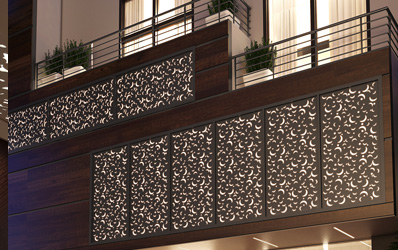Understanding Acoustic Fence Construction A Comprehensive Overview
In today’s noise-polluted urban environments, finding effective solutions to mitigate sound is crucial for enhancing quality of life in residential and commercial areas. Acoustic fence construction has emerged as a popular method to tackle noise pollution effectively. This article delves into the principles behind acoustic fences, their construction methods, materials used, benefits, and considerations for implementation.
What is an Acoustic Fence?
An acoustic fence is a specially designed barrier that reduces sound transmission between areas. Unlike traditional fences, which primarily serve as physical barriers, acoustic fences aim to absorb, deflect, or block sound waves, making them particularly valuable for properties located near busy roads, industrial areas, or other noise sources. These structures are typically constructed using dense materials and can be designed to integrate with the surrounding environment aesthetically.
Principles of Sound Attenuation
The effectiveness of an acoustic fence in reducing noise hinges on a few fundamental principles. Sound travels in waves and is influenced by the density, height, and design of barriers. High-frequency sounds are generally easier to block than low-frequency sounds. Acoustic fences exploit this by using materials that absorb sound waves, effectively reducing their intensity before they reach the listener's ears. The height of the fence also plays a crucial role; taller fences are generally more effective in blocking direct sound paths.
Materials Used in Acoustic Fence Construction
A variety of materials can be employed in the construction of acoustic fences. Common options include
1. Wood When treated appropriately, wood can absorb sound and provide an aesthetically pleasing look. Solid wood panels, especially when thick, offer good sound attenuation.
2. Concrete Concrete barriers are excellent for blocking sound due to their mass and density. They are commonly used in areas where high levels of noise reduction are required.
3. Vinyl Vinyl fencing has gained popularity due to its durability and soundproofing properties. Many modern vinyl products are designed specifically for noise reduction, featuring thick, layered constructions.
4. Earth Mounds Also known as earth berms, these natural sound barriers can effectively dampen noise when designed to a suitable height and shape. They also serve as environmentally friendly solutions.
acoustic fence construction

5. Composite Materials Innovative materials combining various elements can improve both aesthetics and sound absorption capabilities. These often use recycled materials to enhance sustainability.
Benefits of Acoustic Fences
The primary benefit of acoustic fences is their ability to significantly reduce noise pollution, leading to better mental well-being and increased property value. Residents living near highways, railways, or industrial zones often experience improved quality of life with such installations. Additionally, acoustic fences can provide privacy and security, creating a serene environment for homes and businesses alike. From a commercial standpoint, businesses can benefit from a more peaceful work environment, potentially increasing productivity and employee satisfaction.
Considerations for Installation
While acoustic fences offer numerous advantages, there are several critical factors to consider before installation
1. Zoning Laws and Permits Various regions have regulations concerning the height and type of fencing that can be installed. It’s essential to consult local authorities to ensure compliance.
2. Design Aesthetics Acoustic fences can be designed to blend with the surroundings. Exploring different styles and finishes can help homeowners achieve a balance between functionality and visual appeal.
3. Maintenance Some materials, like wood, may require regular maintenance to retain their soundproofing capabilities. Homeowners should consider the long-term upkeep of their chosen material.
4. Cost Acoustic fences can vary significantly in price based on materials and design complexity. Budgeting for the installation and potential future maintenance is advisable.
Conclusion
Acoustic fence construction presents an effective solution for mitigating noise pollution in various settings, from urban residences to commercial properties. By understanding the principles of sound attenuation, selecting appropriate materials, and considering design, homeowners and planners can create peaceful enclaves amid the hustle and bustle of modern life. As noise awareness continues to rise, the demand for acoustic solutions like fences will only increase, shaping the future of urban living.
-
Why Galvanized Trench Cover Steel Grating Resists Corrosion
NewsJul.10,2025
-
The Versatility and Strength of Stainless Expanded Metal Mesh
NewsJul.10,2025
-
Load Calculations in Steel Grating Platforms
NewsJul.10,2025
-
Keeping Pets and Kids Safe with Chicken Wire Deck Railing
NewsJul.10,2025
-
Hole Diameter and Pitch for Round Perforated Metal Sheets
NewsJul.10,2025
-
Aluminium Diamond Mesh in Modern Architecture
NewsJul.10,2025
Subscribe now!
Stay up to date with the latest on Fry Steeland industry news.

